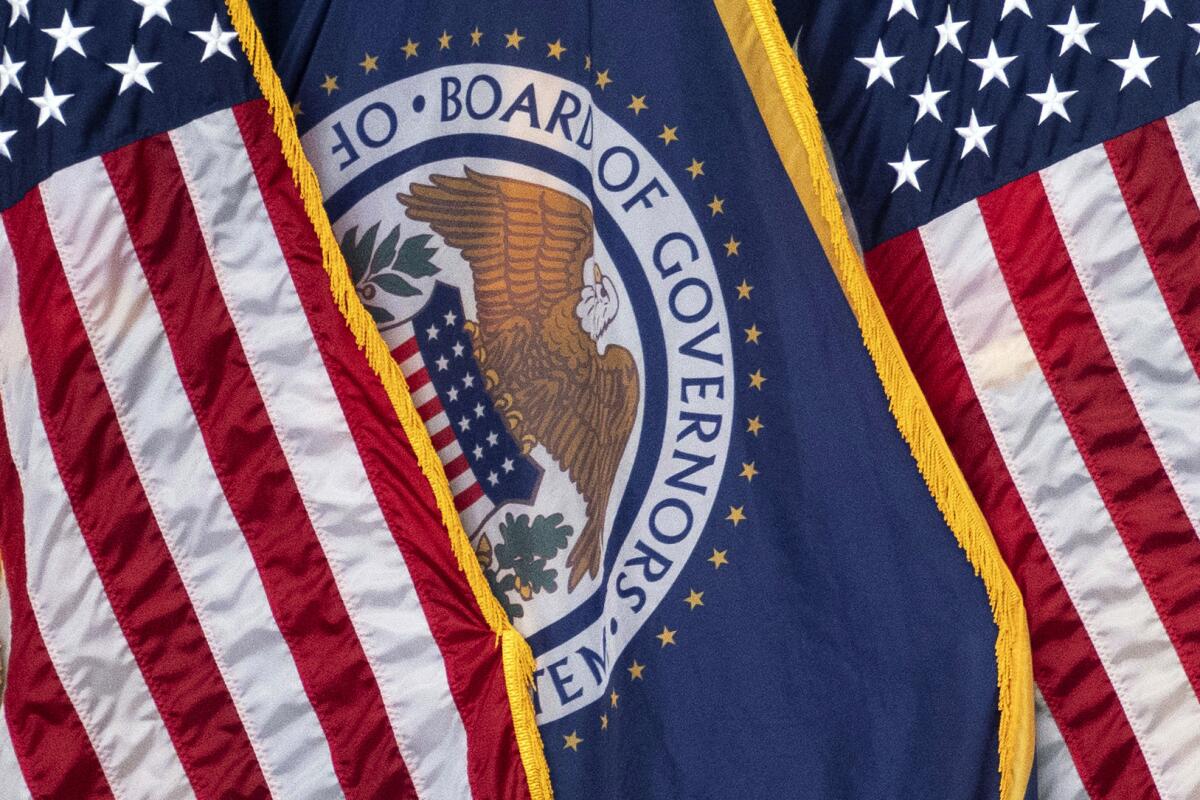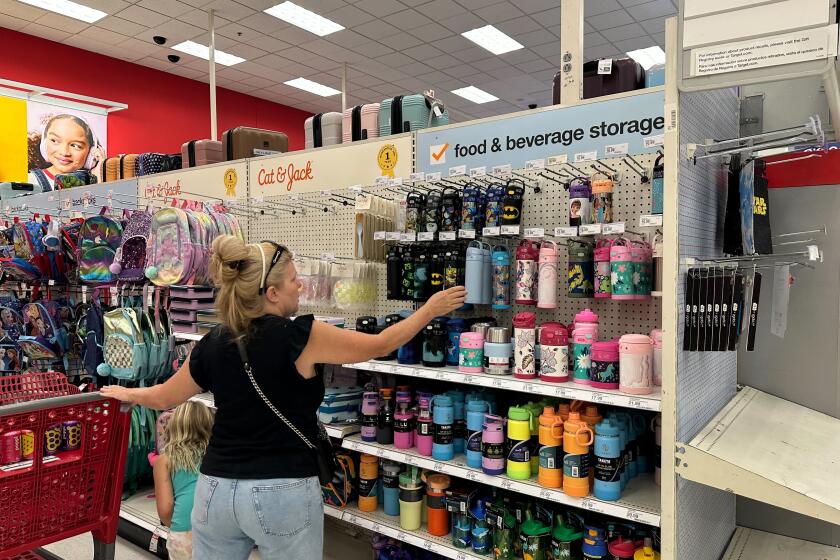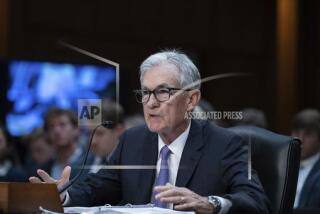Fed keeps rates unchanged but signals likelihood of another hike this year to fight inflation

The Federal Reserve left its key interest rate unchanged Wednesday for the second time in its last three meetings, a sign that it’s moderating its fight against inflation as price pressures have eased. But Fed officials also signaled that they expect to raise rates once more this year.
Consumer inflation has dropped from a year-over-year peak of 9.1% in June 2022 to 3.7% last month. Yet it’s still well above the Fed’s 2% target, and its policymakers made clear Wednesday that they aren’t close to declaring victory over the worst bout of inflation in 40 years.
The continued strength of the U.S. economy could require further interest rate increases, Federal Reserve Chair Jerome Powell said in a closely watched speech that also highlighted the uncertain nature of the economic outlook.
The Fed’s latest decision left its benchmark rate at about 5.4%, the result of 11 rate hikes it unleashed beginning in March 2022. Those increases have significantly raised the costs of consumer and business loans. In fine-tuning its interest rate policies, the central bank is trying to guide the U.S. economy toward a tricky “soft landing” of cooling inflation without triggering a deep recession.
The Fed’s decisions Wednesday underscored that even while its policymakers approach a peak in their benchmark rate, they intend to keep it at or near its high for a prolonged period. Besides forecasting another hike by year’s end, the officials now envision keeping rates high deep into 2024.
They expect to cut interest rates just two times in 2024, down from four rate cuts they had envisioned back in June. They predict that their key short-term rate will still be 5.1% at the end of 2024 — higher than it was from the 2008-09 Great Recession until May of this year.
The policymakers’ inclination to keep rates high for an extended period suggests that they remain concerned that inflation might not be falling fast enough toward their 2% target. The job market and the economy have remained resilient, confounding expectations that the Fed’s series of hikes would cause widespread layoffs and a recession.
“The process of getting inflation sustainably down to 2% has a long way to go,” Chair Jerome H. Powell said at a news conference. “We’ve seen progress, and we welcome that, but we need to see more progress” before concluding that it’s appropriate to end the rate hikes.
At the same time, Powell said he feels confident that the end of the rate-hiking cycle is near: “We’re fairly close, we think, to where we need to get.”
“We’re taking advantage of the fact that we moved quickly in the past, he added, to manage rates “a little more carefully now as we sort of find our way to the right level of restriction that we need to get inflation back down to 2%.”
Treasury yields moved sharply higher Wednesday after the Fed issued a statement following its latest policy meeting and updated its economic projections. The yield on the two-year Treasury note, which tends to track expectations of future Fed actions, surged from 5.04% to 5.15%.
In their new quarterly projections, the policymakers estimate that the economy will grow faster this year and next year than they had previously envisioned. They now foresee growth reaching 2.1% this year, up from a 1% forecast in June, and 1.5% next year, up from their previous 1.1% forecast.
Core inflation, which excludes volatile food and energy prices and is considered a good predictor of future trends, is now expected to fall to 3.7% by year’s end, better than the 3.9% forecast in June. Core inflation, under the Fed’s preferred measure, is now 4.2%.
The approach to rate increases that the Fed is now taking reflects an awareness among the officials that the risks to the economy of raising rates too high is growing. Previously, they had focused more on the risks of not doing enough to slow inflation.
In generating sharply higher interest rates throughout the economy, the Fed has sought to slow borrowing — for houses, cars, home renovations, business investment and the like — to help ease spending, moderate the pace of growth and curb inflation.
Inflation’s relentless surge didn’t merely persist in June. It accelerated. Here’s why.
Although clear progress on inflation has been achieved, gas prices have lurched higher again, reaching a national average of $3.88 a gallon as of Tuesday. Oil prices have surged more than 12% in just the last month.
And the economy is still expanding at a solid pace as Americans, buoyed by steady job growth and pay raises, have kept spending. Both trends could keep inflation and the Fed’s interest rates high enough and long enough to weaken household and corporate spending and the economy as a whole.
Although overall inflation has declined, the costs of some services — such as auto insurance and car repairs — are still climbing faster than they were before the COVID-19 pandemic. Still, most recent data are pointing in the direction the Fed wants to see: Inflation in June and July, excluding volatile food and energy prices, posted its two lowest monthly readings in nearly two years.
And signs have grown that the job market isn’t as robust as it had been, which helps keep a check on inflation. The pace of hiring has moderated. The number of unfilled openings fell sharply in June and July. And the number of Americans who have started seeking work has jumped. This has brought labor demand and supply into better balance and eased pressure on employers to raise pay to attract and keep workers — a trend that can lead them to raise prices to offset higher labor costs.
As back-to-school shopping is forecast to reach a record $41.5 billion this year, parents and teachers in L.A. debate what’s essential on their lists — and get creative to make ends meet.
Still, the path back to lower inflation has become more uneven: On a monthly basis, consumer prices jumped 0.6% in August, the most in more than a year. Compared with a year earlier, prices rose 3.7%, the second straight such increase.
And some factors are threatening to reignite inflation, weaken the economy, or both. Rising oil prices, for example, are making gasoline steadily more expensive. Should that trend continue, it would worsen inflation and leave consumers with less money to spend. Even the so-far limited strike by the United Auto Workers union against the Big Three U.S. automakers could eventually further inflate vehicle prices.
This week’s Fed meeting comes as central banks around the world are mostly raising rates to fight inflation. Prices spiked after the pandemic hampered global supply chains, causing shortages and higher prices. Inflation worsened after Russia’s invasion of Ukraine in February 2022 sent oil and other commodity prices spiking.
More to Read
Inside the business of entertainment
The Wide Shot brings you news, analysis and insights on everything from streaming wars to production — and what it all means for the future.
You may occasionally receive promotional content from the Los Angeles Times.













